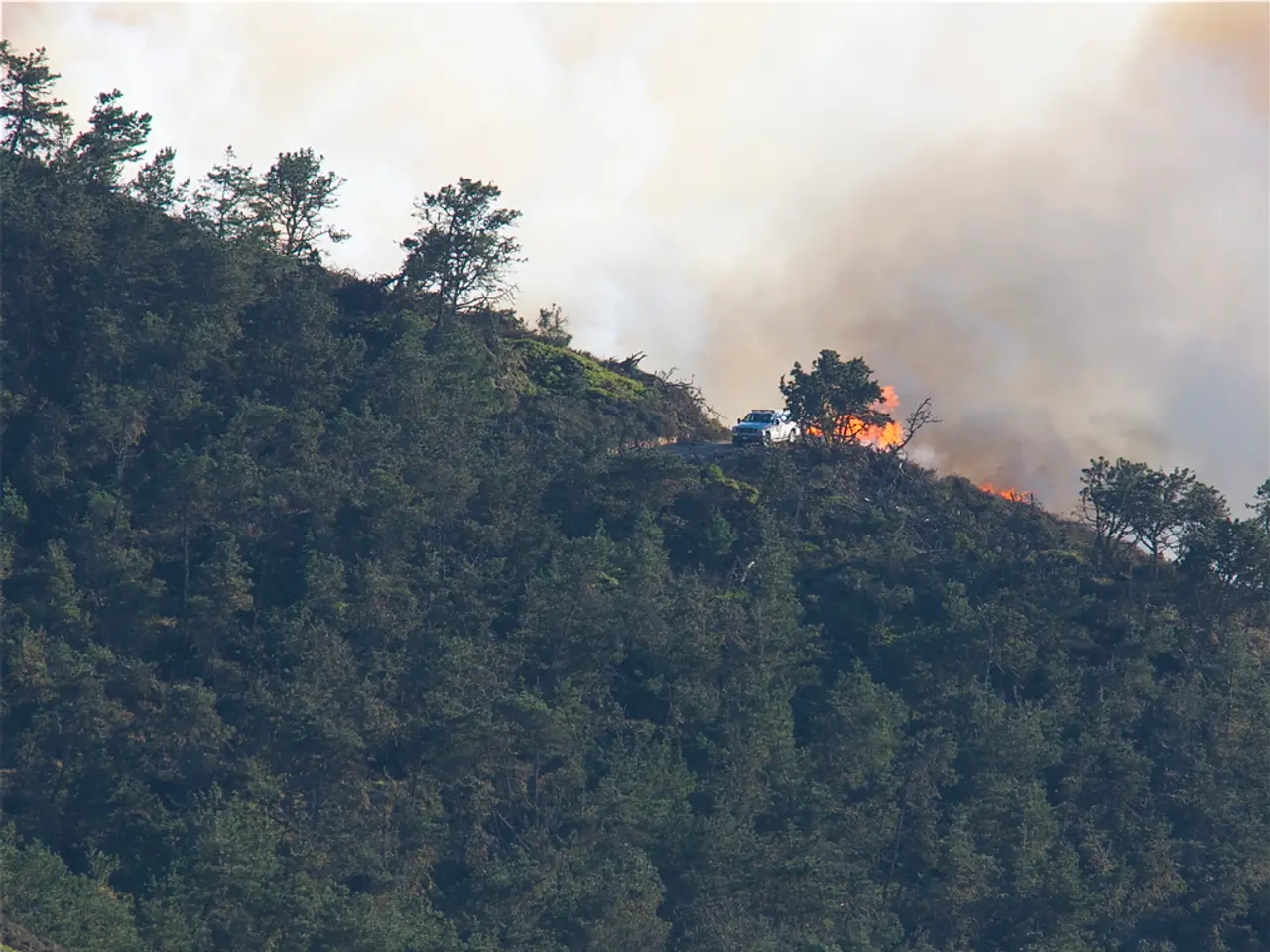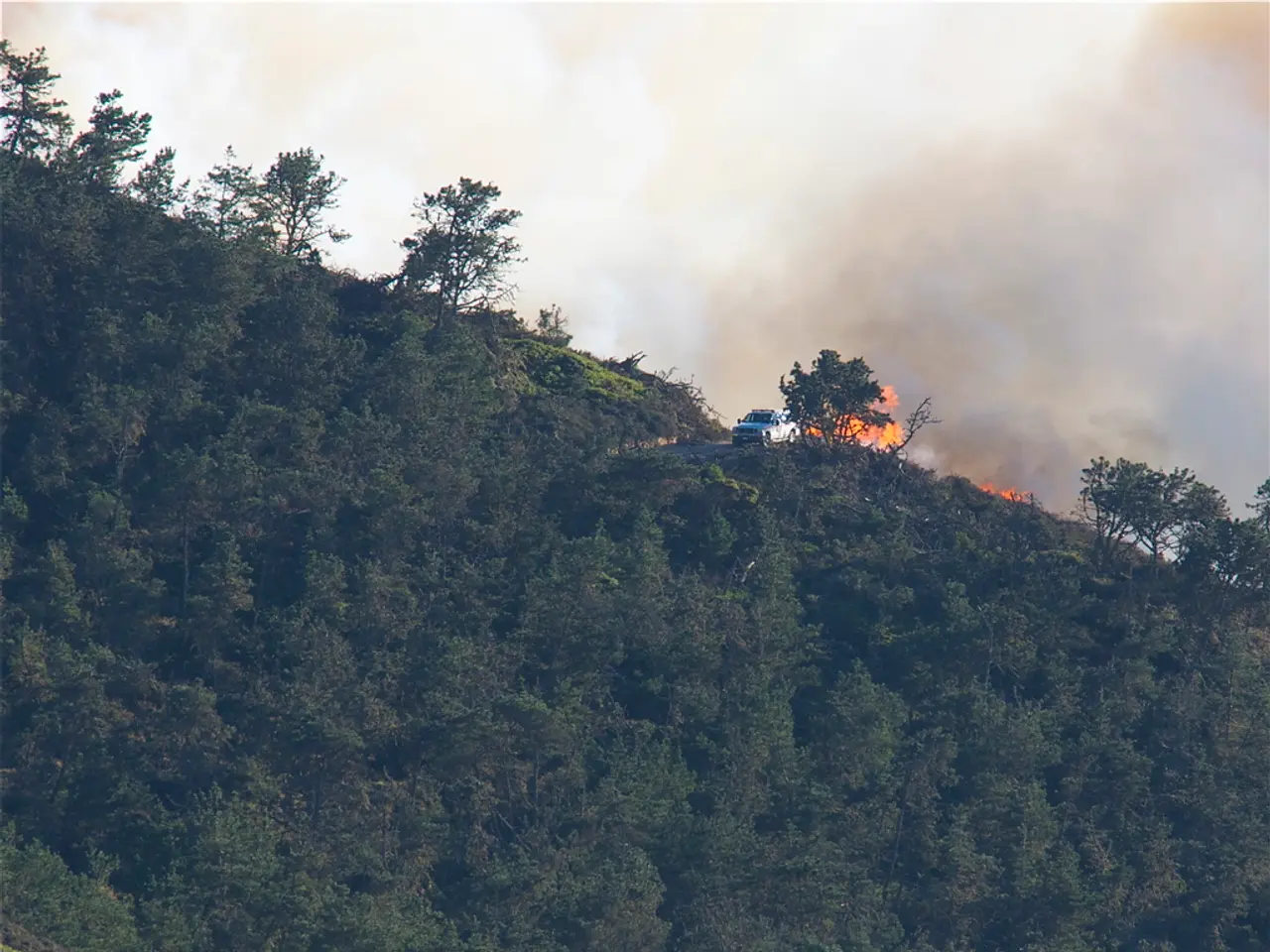Persistent Efforts Persist in Containing Forest Fires in Saxony and Thuringia
## Current Status of Forest Fires in Thuringia and Saxony
### Overview
A series of devastating forest fires have been raging across Thuringia and Saxony for several days, causing concern for local authorities and residents. The fires, primarily fueled by a severe heatwave, have scorched hundreds of hectares of land and threatened several communities.
### Size of the Fires
- **Saxony**: The fire in the Gohrischheide region has spread across approximately **200 hectares**. Despite the efforts of hundreds of firefighters and emergency personnel, the fire continues to advance northwards [1][3]. - **Thuringia**: The largest forest fire in the state in three decades, near Gosselsdorf on the Saalfelder Höhe, has expanded to around **300 hectares**. Strong winds are complicating containment efforts [3][4].
### Causes of the Fires
The fires are primarily fueled by a severe heatwave that has pushed temperatures close to **40°C** in Germany. This heatwave has been a significant factor in sparking numerous forest fires across eastern Germany [3].
### Status of Evacuations
While specific evacuation numbers are not detailed in the available reports, several towns in Saxony, including **Zeithain, Wulknitz, and Groditz**, have declared states of emergency due to the proximity of the fires to nearby communities [3]. However, there is no mention of large-scale evacuations.
### Firefighting Efforts and Challenges
- **Firefighting Personnel**: Nearly **500 firefighters and emergency personnel** have been deployed to tackle the fires in Saxony. Additionally, a total of **1,000 emergency responders** have been mobilized across both regions [1][3]. - **Challenges**: The firefighting efforts are complicated by the presence of unexploded ordnance on the former military training ground where the fire in Gohrischheide is burning [3]. Strong winds are also hampering containment efforts in Thuringia [3].
### Current Situation
The Wülknitz district of Heidehäuser remains evacuated, and another location is being evacuated due to the forest fire in the Saxon municipality of Zeithain, with approximately 45 people expected to leave their homes in the village of Jacobsthal Bahnhof [2]. The situation at the forest fire in the Gohrisch Heath on the border between Saxony and Brandenburg is stable, but the flames continue to spread at several points [3].
### Future Outlook
The experts on site are looking at the weather with concern, as there are no major rainfall expected over the weekend [3]. The night was quite cool, and there was no further development in the fire at the Gohrisch Heath, but with the rising temperatures over the weekend, the fire could flare up again [5]. The fire-fighting operations are expected to continue at least until the beginning of next week [3].
### Aerial Deployment
Aerial deployment forces are attempting to prevent further spread in the peripheral areas of the Gohrisch Heath fire [6].
### Precautions for Residents
Residents in the area must be careful that no sparks jump over.
As the situation remains critical, ongoing efforts to combat the fires and protect nearby communities are essential. The situation will be closely monitored, and updates will be provided as more information becomes available.
In the context of the ongoing forest fires in Thuringia and Saxony, it's crucial that residents be cautious to avoid any sparks that could potentially fan the flames, given the critical state of the fires. Additionally, the science behind environmental-science and weather plays a significant role in the fires, as the severe heatwave pushing temperatures near 40°C acts as a primary fuel source, exacerbating the fires across eastern Germany.








